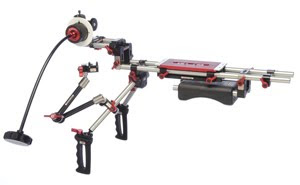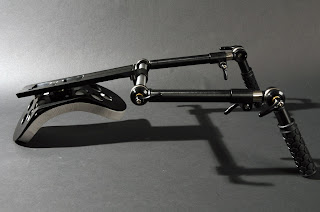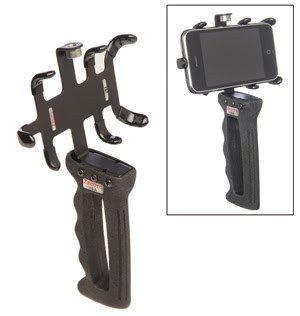
I have a collection of manual Nikon lenses and accessories and want Nikon to make a DSLR that can function as a (at least somewhat) professional motion picture camera so that I can actually shoot something with it. However, their initial offerings (the D90 and D5000) are purely consumer products leave a lot to be desired. In spite of this, a lot of people (I call them "shooters," not cinematographers, sorry for the condescension) have decided to actually try and make films with these products because they are in search of the magical "DoF" that their 1/3" video cameras lack.
Trying to shoot something with DSLR lenses (whether on front of a 35mm adapter or on an actual DSLR) is already a setback because still lenses aren't designed for motion picture photography, particularly because they have a lot of issues such as breathing and focus markings that aren't suitable for a focus puller.
Just to be clear, I don't expect Nikon or any other manufacturer to put out a professional product with a $1000 price tag, but there seem to be some people who think of these products as "almost there" or even acceptable for professional use. However, even some consumer camcorders in the $1000 price range have full manual controls and a higher bitrate than the D90. People are getting hooked in by the "DoF" and seem to be willing to throw everything else away for it.
Below are the issues that I've seen with the camera, based off video samples and literature. Only one of these issues are specific to Nikon HD DSLRs (the rolling shutter), and the rest actually apply to all of the HD DSLRs on the market today (currently there is one offering from Canon and one from Panasonic as well). The only advantages I can see with these cameras are that you could sneak them into places that don't allow motion photography, or have permit situations that are prohibitive.
1. Rolling shutterNikon employs CMOS sensors that scan the frame from top to bottom, left to right. Therefore, from the top the the bottom of the frame there will be a 1/48 sec exposure timing difference (I'm actually assuming that this is the duration of exposure for these cameras, but I'm not sure since it's not under manual control... more on that below). Regardless, this discrepancy in exposure causes a "jello" effect that has been very noticeable in 100% of the handheld work that I've seen, a good portion of all moving camera work, and even some shots that were locked off. Until Nikon works this out, I would say that it's the #1 issue with their cameras.
2. No real viewfinderThere's a reason that camera operators look through a high quality viewfinder. It allows them to:
- Check focus
- Check the frame at maximum resolution (either optically or electronically) for any issues that need to be taken care of by them (such as lens flares or anomalies), or issues that need to be reported to someone else (such as positioning of set dressing).
- It allows them to see the image in a totally glare-free environment.
Unfortunately, an SD LCD with a Hoodman attached to a D90 doesn't really cut it. Yes, this is what the operator looks at for steadicam shots, but thats because they don't have a choice.
It's certainly possible to shoot a film without a viewfinder, but it's a complete handicap for the operator, and you really don't want to shoot an entire movie that way.
One workaround is to do it Roger Deakins style and operate a remote head while looking at a full size HD monitor with a larger hoodman that can actually get the glare under control (the D90 does have HDMI out). However, if the production can afford a remote head, they probably aren't using a DSLR to shoot the film.
3. BitrateThe encoder on the camera employs a variable bit rate, which seems to fall between 4-24 mbps depending on the complexity of the frame. Unfortunately, there is no way to set the bitrate manually, but some people have gone so far as to point the camera at a complex chart before shooting in order to force the camera into a higher bitrate for a limited amount of time.
4-24 mbps isn't high enough to produce an image that is viewable on a full rez HD display or projection without noticeable compression artifacts in at least some parts of the image. As a reference, DV is 25 mbps (albeit a codec that isn't as efficient), and DVCPROHD is 100 mbps.
4. No manual shutter or ISONikon has promised to do a firmware fix for this, but it may take a while. This is a basic function that is needed for any kind of real image control.
5. No over/under crankingLack of overcranking is bigger issue than lack of undercranking, but my guess is that 24fps is the approximate maximum data throughput of the camera at this time. Lack of this ability pretty much precludes it from any use on commercials or music videos, and is still a major limitation for narrative filmmaking.




